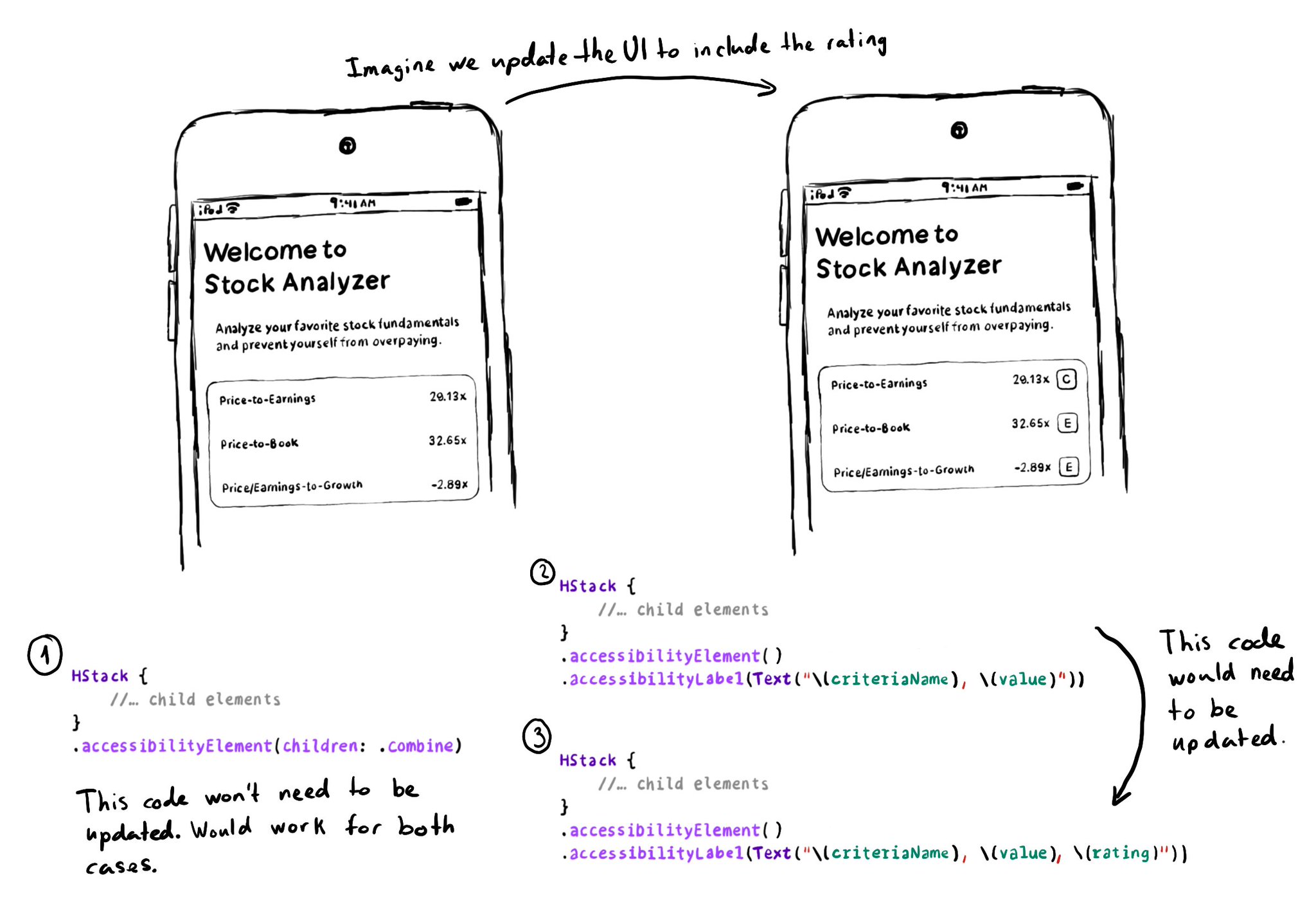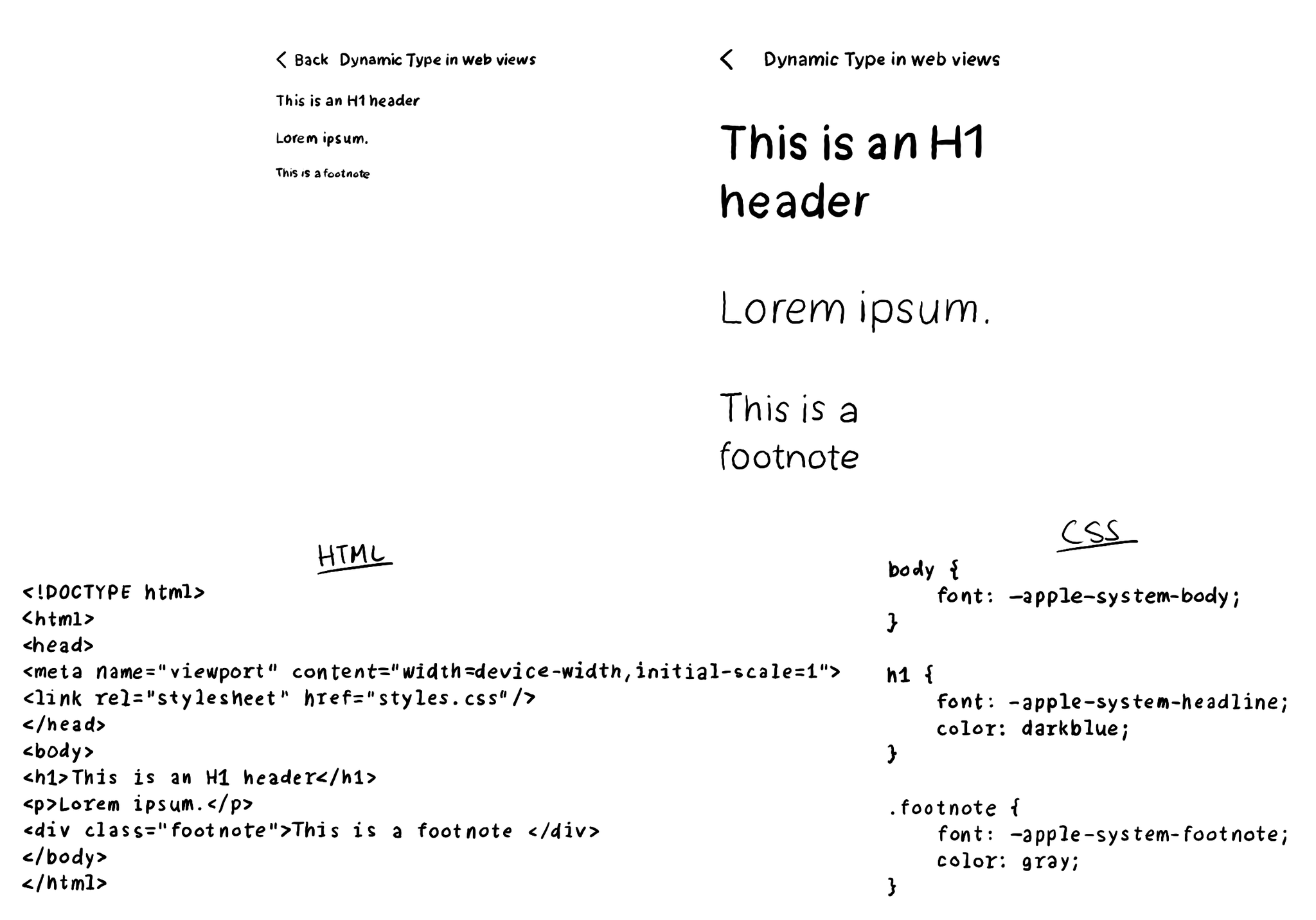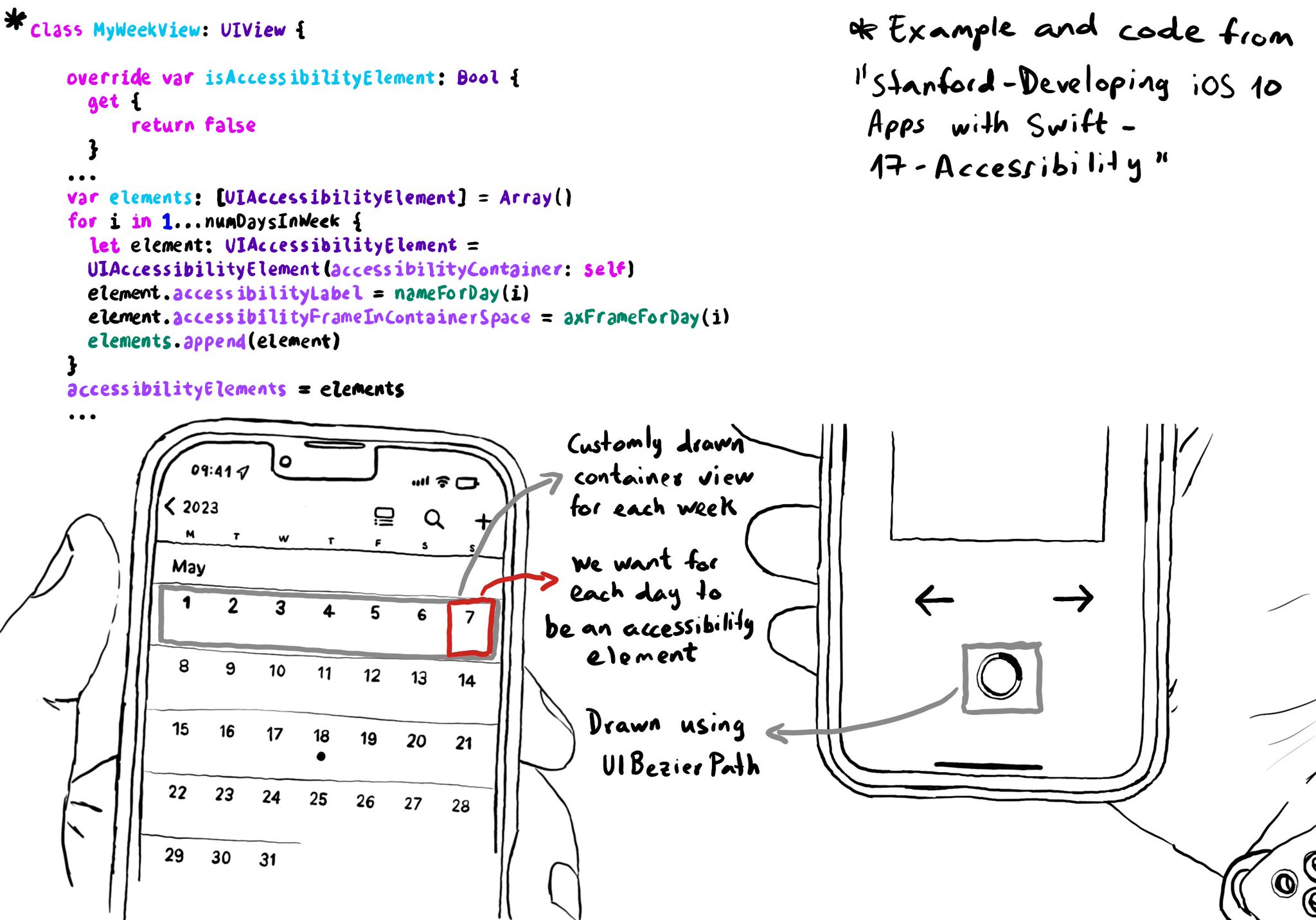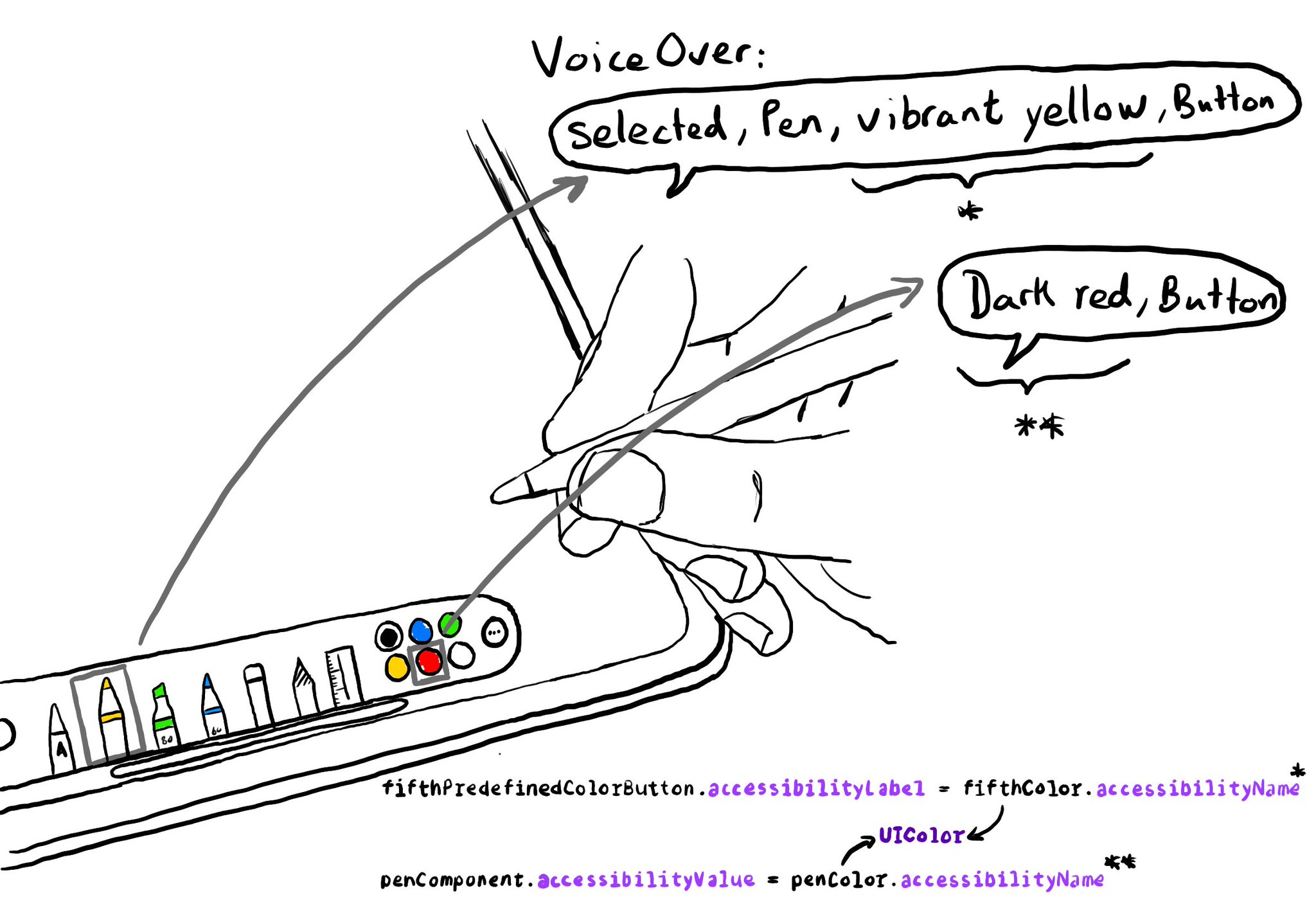Apple asks us to consider the combine behavior, before using ignore, for .accessibilityElement(children: ). And for good reason, if combine works, and later on you decide to change the UI, the accessibility attributes will be updated for you.

You may also find interesting...

If you have any web views in your app (Terms and Conditions and Privacy Policy, I'm looking at you), you can also support Dynamic Type for them. You can set an Apple system font with the same styles available for native development in your CSS.

You can create your own accessibility elements from scratch. One use-case for doing that is when you do some custom drawing instead of building your UI using or relying on UIKit components. A circular progress bar, could be an example.

Since iOS 14, you can get a human readable localised name for a UIColor, with a very useful property called accessibilityName, that you can use in accessibility attributes like labels or values. How cool is that? https://developer.apple.com/documentation/uikit/uicolor/accessibilityname